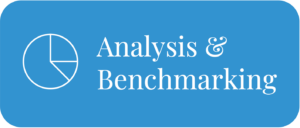Opportunity Analysis for Procurement Savings
To effectively achieve savings, you need to be aware of
what opportunities for saving exist.
Frequently Asked Questions
-
What is an Opportunity Analysis in Procurement?
Opportunity analysis quantifies where procurement can create measurable value. It’s not guesswork — it’s a structured, data-led roadmap.
Typical levers include:
- Savings Potential – Better pricing, smarter terms, or sourcing redesign.
- Consolidation – Reducing supplier fragmentation to increase leverage and reduce admin.
- Process Efficiency – Cutting cycle times, automation, and freeing staff capacity.
- Supplier Rationalisation – Focusing resources on the suppliers that matter most.
- Contract Optimisation – Renegotiating unfavourable or expired agreements.
- Risk & Resilience – Assigning value to continuity protection and compliance improvements.
- Innovation & ESG – Spotting opportunities where suppliers can co-develop solutions or drive sustainability outcomes.
PI identifies and quantifies opportunities through advanced spend categorisation, benchmarking, and predictive analytics — helping procurement build a prioritised value pipeline.
-
How can you use spend analysis for Strategic Sourcing?
Spend analysis is the entry point for strategic sourcing — it gives clarity on where to focus, how to approach markets, and what leverage you truly have.
- Category Prioritisation – Identifying categories with the greatest potential based on spend sise, fragmentation, and market dynamics.
- Supplier Market Mapping – Exposing concentration risk, gaps, and opportunities for diversification.
- Baseline Setting – Establishing a fact base for cost, service, and total cost of ownership.
- Should-Cost & Benchmarking – Using internal and external data to validate pricing and arm negotiators with evidence.
- Strategy Design – Determining where to run competitive tenders, where to partner, and where to innovate.
- Leakage Detection – Highlighting maverick spend or contract non-compliance undermining sourcing gains.
Purchasing Index (PI) provides the analytics and benchmarking platform that underpins evidence-based sourcing strategies — turning spend data into leverage and insight for better decisions.
-
How can you use spend analysis for Procurement Governance?
Governance without visibility is theatre. Spend analysis provides the transparency and controls to make governance meaningful:
- Policy & Delegation Compliance – Detecting purchases outside approved channels or authority levels.
- Contract Assurance – Verifying spend aligns with negotiated terms and contracted suppliers.
- Risk Oversight – Monitoring supplier dependency, geographic exposure, and financial resilience.
- Audit-Ready Evidence – Providing traceable data for regulators, auditors, and boards.
- Exception Management – Flagging anomalies that may indicate fraud, waste, or poor practice.
PI’s dashboards and reporting tools give organisations real-time visibility into compliance and governance, making oversight practical rather than theoretical.
-
What is the difference between spend cube analysis and spend dashboards?
Both are tools for insight, but they serve different purposes:
- Spend Cube – A multidimensional analytical model (e.g. supplier × category × business unit) used for deep dives and discovery. Best for analysts and strategists exploring “what’s going on beneath the surface.”
- Spend Dashboards – Visual, real-time KPI monitors designed for performance tracking and decision-making. Best for leaders who need quick visibility into trends, compliance, and exceptions.
Put simply: cubes are for diagnosis, dashboards are for monitoring.
PI provides both — detailed spend cubes for analysts and intuitive dashboards for executives to track procurement performance.
-
How do analytics support category strategies?
Category strategies are only as strong as the data behind them. Analytics provide:
- Market Intelligence – Combining internal spend with external data for a full view of pricing, capacity, and risk.
- Segmentation & Prioritisation – Focusing resources on the categories with the biggest business impact.
- TCO Models – Understanding all cost drivers, not just unit price.
- Risk & Resilience Insights – Predicting vulnerabilities like supplier dependency or market volatility.
- Benchmarking & Forecasting – Comparing against peers and projecting future demand.
- Leakage Detection – Ensuring strategies deliver value rather than erode through non-compliance.
PI equips teams with analytics and benchmarking that strengthen category strategies, making them fact-based, risk-aware, and continuously monitored.







